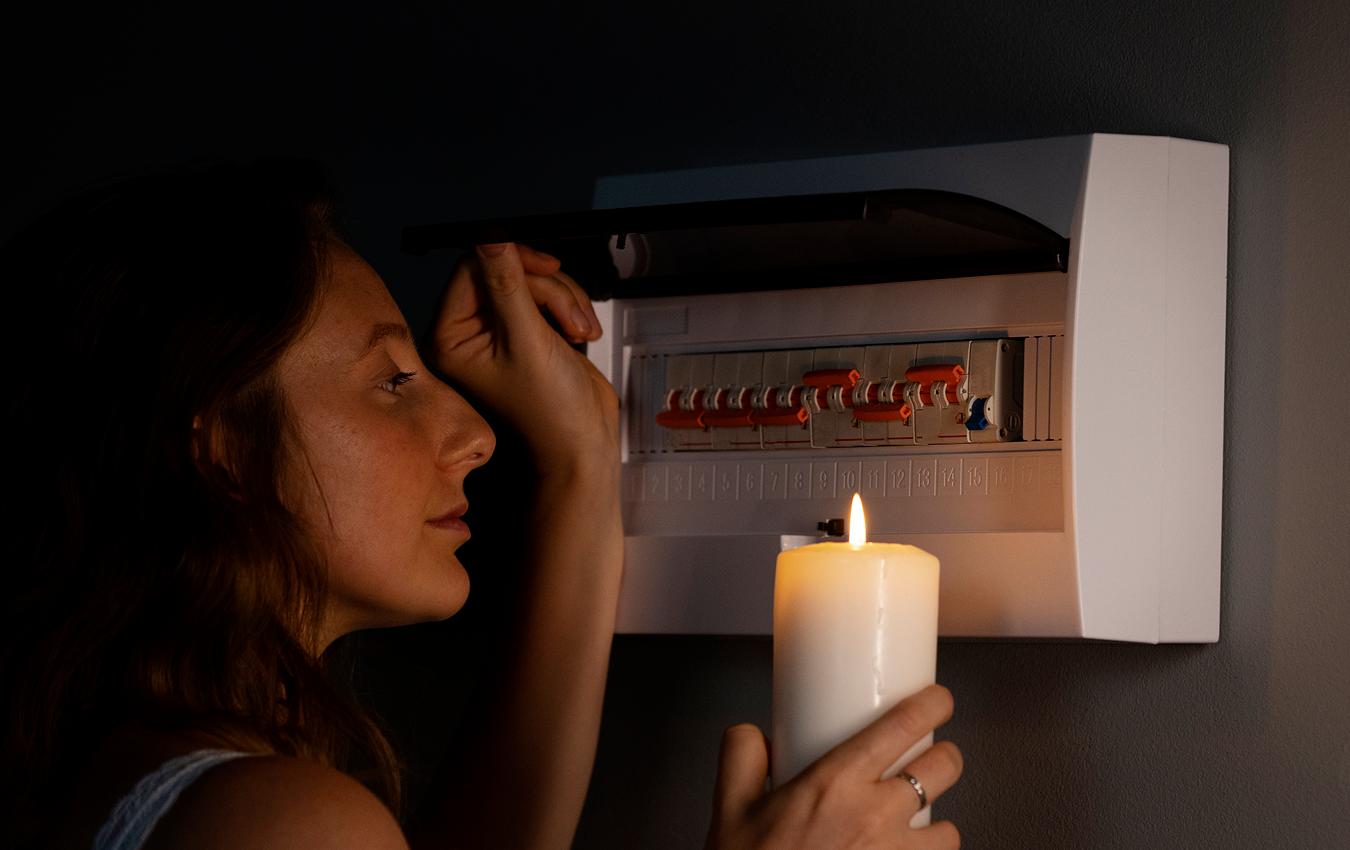Energy costs are not some abstract line item; they are a direct drain on your profitability. For too many businesses, these costs are accepted as an unavoidable overhead, a fixed burden that fluctuates only with market whims or seasonal changes. This perspective is fundamentally flawed and financially damaging. The reality? A significant portion of your energy expenditure, potentially up to 30% or even more in some facilities, is likely pure waste. It’s money evaporating into thin air through inefficient systems, leaky infrastructure, and outdated technology.
The complexity of modern commercial buildings, with their interconnected systems for climate control, lighting, operations, IT, and extensive electrical services, makes pinpointing these losses challenging. It’s rarely one single, obvious culprit but rather a death-by-a-thousand-cuts scenario. The strategic countermeasure, the tool designed specifically to dissect this complexity and turn waste into savings, is the commercial energy audit. This isn’t just another inspection; it’s a forensic financial investigation into your building’s operational performance, an investment designed to yield substantial returns. Understanding where your energy dollars are truly going is the non-negotiable first step towards controlling, reducing, and optimizing one of your largest operational expenses.
Demystifying the Audit: A Scalpel, Not a Sledgehammer
A commercial energy audit is a systematic, rigorous assessment of how, where, and why energy is consumed within your facility. It moves beyond simple bill-reading into a comprehensive analysis of the physical assets and operational patterns that drive consumption. Recognizing that not all buildings or budgets are the same, these audits typically fall into distinct levels of intensity, often aligned with standards like those from ASHRAE (American Society of Heating, Refrigerating and Air-Conditioning Engineers).
Level 1: The Foundational Walk-Through
A Level 1 audit provides a high-level overview. It involves visual inspections of major systems, a review of historical energy bills to identify trends and anomalies, and interviews with facility staff. Its goal is to quickly identify low-cost or no-cost energy-saving opportunities – the “low-hanging fruit.” While valuable for initial screening, it rarely delves deep enough to quantify complex interactions or justify major capital investments.
Level 2: Data-Driven Survey and Analysis
Moving to a Level 2 audit represents a significant increase in detail. This involves more thorough data collection, including detailed inventories of energy-consuming equipment (HVAC units, motors, lighting fixtures, process machinery), measurements of operating characteristics, and a more sophisticated breakdown of energy use by end-use (e.g., how much energy goes to lighting vs. cooling vs. plug loads). The analysis here provides specific energy conservation measures (ECMs) with estimated costs, savings, and simple payback periods, sufficient for making decisions on many common upgrades.
Level 3: Precision Modeling for Major Investments
The Level 3 audit is the most intensive, often called a Detailed Analysis of Capital-Intensive Modifications. This level is typically reserved for complex facilities or when considering major capital projects like replacing central plants, installing cogeneration, or undertaking significant building envelope retrofits. It builds upon Level 2 data but incorporates extensive monitoring, data logging, and sophisticated computer modeling (e.g., using energy simulation software like eQUEST or EnergyPlus) to accurately predict energy savings from interacting systems. The financial analysis is also more rigorous, often including life-cycle cost analysis.
Performing these audits effectively requires expertise. Qualified energy auditors, engineers or technicians with specific certifications (like Certified Energy Manager – CEM from the Association of Energy Engineers – AEE), possess the technical knowledge to analyze complex systems. Premier Electrical Services employs such experts, ensuring the analysis is grounded in solid engineering principles. Crucially, modern audits leverage powerful diagnostic tools. Infrared thermography cameras reveal hidden heat loss or gain through walls, roofs, and windows, and can spot overheating electrical connections. Blower doors quantify building air leakage, a major source of wasted heating and cooling energy. Data loggers track equipment run times and power consumption patterns over time, providing granular insights far beyond what monthly utility bills show. These technologies transform the audit from guesswork into a data-driven diagnostic process.
Unmasking the Energy Vampires in Your Building
Identifying where the waste occurs is the core function of the audit. While every building is unique, certain systems consistently emerge as primary culprits for energy inefficiency across commercial facilities. Understanding these usual suspects provides context for the audit’s findings.
HVAC Inefficiencies: The Overlooked Giant
The Heating, Ventilation, and Air Conditioning (HVAC) system is frequently the largest single energy consumer in a commercial building. Its potential for waste is multifaceted. Outdated or improperly sized equipment operates inefficiently from the start; a unit too large cycles excessively, while one too small runs constantly, both wasting energy. Neglected maintenance is another major drain – dirty filters restrict airflow, forcing fans to work harder; clogged coils impair heat transfer; refrigerant leaks reduce cooling capacity and efficiency. Ductwork, often hidden above ceilings or below floors, is a notorious source of loss. Leaks in duct seams or connections allow conditioned air (heated or cooled at significant expense) to escape into unconditioned spaces like plenums or attics. Poorly insulated ducts lose heat in winter and gain heat in summer before the air even reaches its intended destination. Furthermore, control systems are critical. Faulty thermostats provide inaccurate temperature readings, leading to unnecessary heating or cooling. Fixed schedules that don’t adapt to actual occupancy patterns mean conditioning empty spaces. Without a sophisticated Building Automation System (BAS), optimizing start/stop times, temperature setpoints, and ventilation rates across different zones becomes nearly impossible. A core function of a detailed energy audit is to systematically identify energy inefficiencies in commercial HVAC systems, from the central plant to the ductwork endpoints, quantifying these losses and pinpointing solutions like implementing variable frequency drives (VFDs) on motors, upgrading to high-efficiency units, sealing and insulating ducts, or installing smart controls and BAS.
Lighting: Beyond Just Illumination
Illuminating commercial spaces effectively presents its own set of energy challenges. Lighting systems are often the second-largest electricity user. The persistence of outdated technology, primarily inefficient fluorescent tubes (T12s or older T8s) and any remaining incandescent or halogen bulbs, represents significant, easily correctable waste. Modern LED lighting offers dramatic energy savings (often 50-75% or more compared to older technologies) with comparable or superior light quality and much longer lifespans, reducing maintenance costs. Beyond the fixtures themselves, over-illumination – lighting spaces more brightly than needed for the tasks performed – is common and wasteful. Just as critical is the lack of effective controls. Lights burning brightly in unoccupied offices, conference rooms, warehouses, or corridors represent pure waste. Occupancy sensors automatically turn lights off when rooms are vacant. Daylight harvesting sensors dim electric lights near windows when sufficient natural light is available. Time scheduling ensures lights are off during non-business hours. An audit assesses current lighting levels, fixture efficiency, and control strategies, providing a clear roadmap for LED retrofits and control system upgrades with compelling ROI.
The Leaky Shell: Your Building Envelope’s Hidden Costs
The building envelope – the walls, roof, windows, doors, and foundation – acts as the barrier between the conditioned interior environment and the outside elements. Failures in this shell directly increase the load on the HVAC system, forcing it to run longer and harder. Air leakage is a primary offender. Cracks, gaps, and unsealed penetrations around windows, doors, electrical outlets, plumbing stacks, and where walls meet the roof or foundation allow uncontrolled infiltration of outside air and exfiltration of conditioned air. An audit often employs blower door testing to pressurize or depressurize the building, measuring the overall leakage rate and helping pinpoint specific leak locations, often aided by infrared cameras. Insufficient or improperly installed insulation is another major issue. Missing insulation in walls or attics, compressed insulation, or thermal bridging (where structural elements conduct heat through the insulation layer) create pathways for heat loss in winter and heat gain in summer. Outdated windows and doors, particularly single-pane glass or units with failing seals, offer poor thermal resistance (low R-value, high U-factor) and can contribute significantly to energy loss. An audit evaluates insulation levels, window performance, and air barrier integrity, recommending targeted improvements like air sealing, adding insulation, or upgrading windows and doors.
Plug Loads and Phantom Power: The Silent Drain
Often overlooked, plug loads and miscellaneous equipment contribute significantly to a building’s energy consumption. This category includes everything plugged into an outlet: computers, monitors, printers, copiers, servers, refrigerators, coffee makers, and specialized business equipment. “Phantom loads” are a key issue here – devices consuming power even when supposedly turned off or in standby mode. While individual phantom loads may be small, multiplied across hundreds or thousands of devices in a large facility, the cumulative waste becomes substantial. Using older, inefficient appliances and office equipment adds to the burden; always look for ENERGY STAR certified products when replacing equipment. Simply leaving equipment running when not needed, such as monitors and printers left on overnight and weekends, contributes unnecessary kilowatt-hours to the bill. Audits can involve spot measurements or short-term logging of plug loads to estimate their contribution and identify opportunities for using smart power strips (which cut power to peripherals when a main device like a computer is off), implementing computer power management policies, and promoting behavioral changes.
Water Heating: Energy Consumption Beyond the Tap
Finally, water heating can be a surprisingly significant energy user, especially in facilities with kitchens, gyms, or high hot water demand. Old, inefficient tank-style water heaters with poor insulation lose heat constantly (standby losses). Uninsulated hot water pipes lose heat as water travels to the tap, forcing the heater to work harder or requiring users to run water longer. Leaks in hot water pipes or fixtures waste both water and the energy used to heat it. Excessive hot water usage, driven by high-flow fixtures or operational practices, directly increases energy consumption. An audit examines the water heating system’s efficiency, insulation levels, distribution piping, and usage patterns, potentially recommending upgrades to high-efficiency tankless water heaters, adding pipe insulation, installing low-flow fixtures, or repairing leaks.
The Premier Electrical Services Advantage: A Forensic Approach to Energy Savings
Understanding the potential culprits is one thing; systematically identifying and quantifying them in your specific building requires a structured process executed by experts. At Premier Electrical Services, our commercial energy audit process is meticulously designed to deliver actionable intelligence for maximizing your energy savings:
- We begin by understanding your specific business operations, reviewing historical energy use, discussing known issues, and defining your energy reduction goals and financial benchmarks.
- Our experts conduct detailed site surveys, analyze utility bills, and employ advanced diagnostic tools (including infrared thermography, blower door tests where applicable, and data loggers) to capture precise operational data.
- We process the collected data to pinpoint inefficiencies, calculate the building’s energy balance, quantify waste by end-use, and model the potential savings from specific Energy Conservation Measures (ECMs).
- You receive a detailed yet easy-to-understand report outlining findings, prioritized ECMs with estimated costs, projected energy savings, and clear ROI/payback calculations – a roadmap for implementation.
- We collaborate with you to review the recommendations, helping you select the most impactful and financially advantageous projects that align with your budget and operational priorities.
This methodical approach ensures that our recommendations are not just theoretical but are practical, data-driven solutions tailored to deliver measurable reductions in your energy costs.
Conclusion
The message is clear: uncontrolled energy consumption is a direct hit to your company’s financial health. Accepting high energy bills as inevitable is a strategic error. A commercial energy audit performed by qualified experts, like those at Premier Electrical Services, is the essential diagnostic tool to uncover precisely where your energy dollars are being wasted. It moves beyond guesswork, providing a data-driven, prioritized plan to cut operational costs, improve your building’s performance, enhance its asset value, and often increase occupant comfort. The savings identified frequently offer rapid payback periods and attractive returns on investment, making energy efficiency one of the smartest capital allocation decisions a business can make today. Don’t let hidden inefficiencies silently drain your profits month after month. Take assertive action. Stop searching for generic “cost-effective commercial energy audit services near me” and connect with proven experts who deliver measurable results.
Contact Premier Electrical Services at 954-900-1696 today to schedule your commercial energy audit consultation and start converting energy waste into tangible business savings.
Key Takeaways
- Investing in an energy audit provides a data-driven roadmap with prioritized, cost-effective recommendations and clear ROI projections, enabling businesses to significantly reduce operational expenses.
- Ignoring substantial energy waste, potentially 30% or more in commercial buildings, directly drains profits, but these losses can be identified and corrected through strategic action.
- A professional commercial energy audit uses systematic analysis, expert knowledge, and diagnostic tools to pinpoint specific sources of inefficiency across systems like HVAC, lighting, and the building envelope.
Check out the latest news:
- Commercial Energy Audit: Spotting the Sources of Energy Waste
- Protect Your Fort Lauderdale Home with Whole-House Surge Protection
- Power Outages in Fort Lauderdale: How to Protect Your Home
- Preparing for a Home Rewiring Project: A Checklist for Homeowners
- 5 Critical Signs You Need a Whole-House Surge Protector





